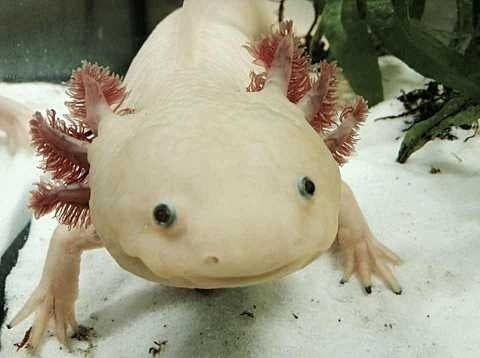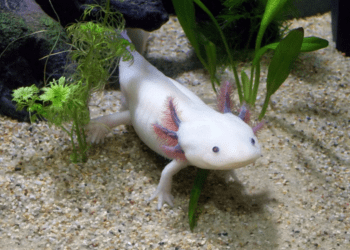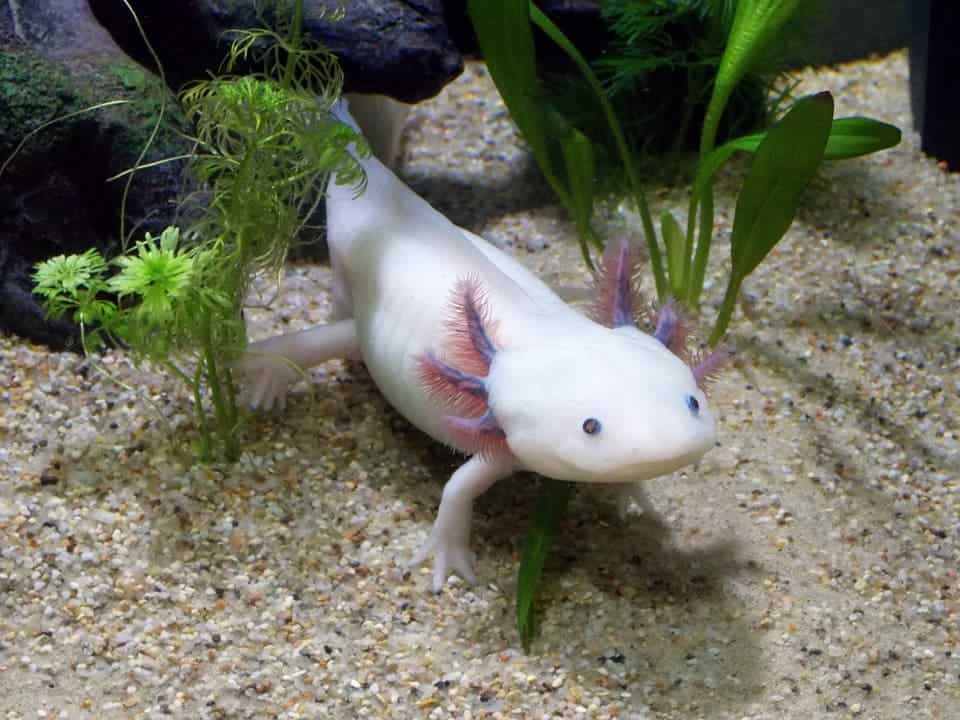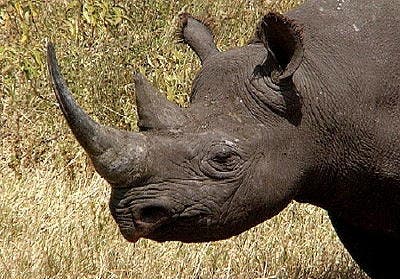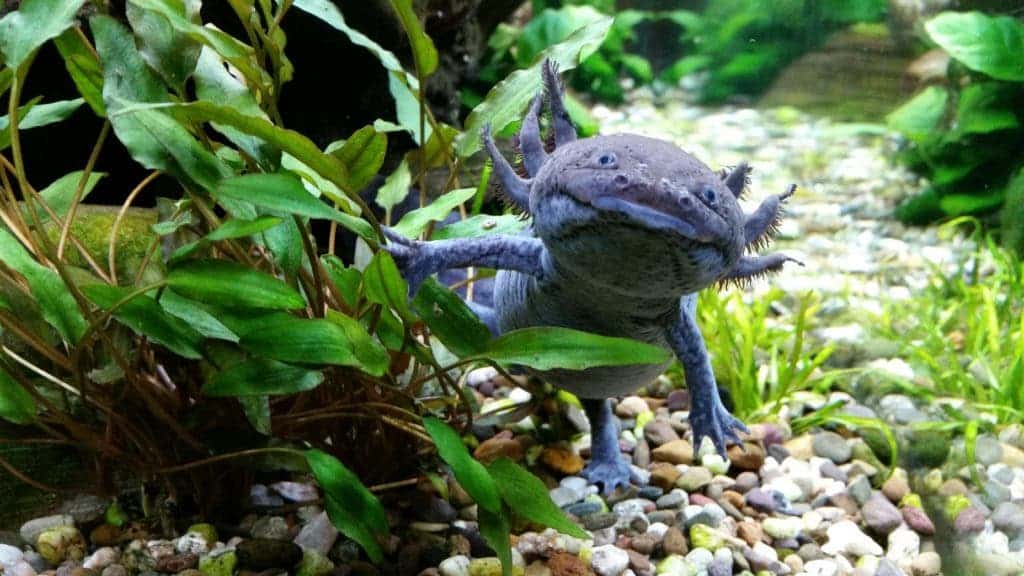
The axolotl (Ambystoma mexicanum), otherwise known as the Mexican Walking Fish, is perhaps the most recognizable salamander in the world. It is commonly kept as a pet and used for scientific research. However, natural populations are severely reduced, with only a few hundred estimated to be living in the wild now.
Introduction to the Axolotl
The axolotl (pronounced “ax-oh-lot-ul”) defies conventional biological taxonomy. It has the slimy skin of a frog, the broad head and mouth of a large fish, and most unusually, a crown of feathery gills, reminiscent of a coral’s graceful fronds.
The axolotl, often called the “Mexican walking fish,” is no fish at all but an aquatic salamander. It’s named after the ancient Aztec god, Xolotl, who, according to mythology, transformed into this amphibian to escape death.
The incredible characteristics of the Axolotl
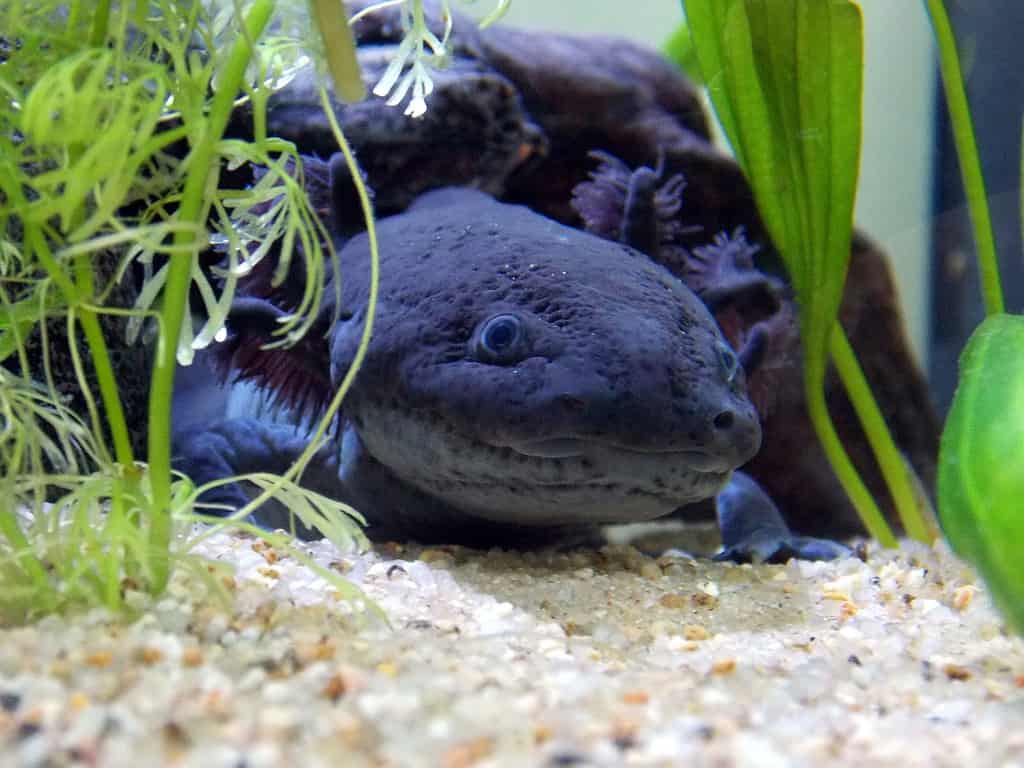
Perpetual Childhood
Perhaps the most striking aspect of axolotls is their unique form of development known as ‘neoteny.’ Unlike most amphibians, axolotls reach sexual maturity without undergoing metamorphosis.
In other words, while a tadpole becomes a frog and sheds its gills, an axolotl retains its gills and juvenile form for life, effectively living in a state of perpetual childhood.
This means that even when they become adults, they keep the traits usually only seen in juveniles. This includes their gills, which they keep in adulthood. They live in the water their whole lives. In contrast, most other salamanders lose their gills and live on land.
Masters of Regeneration

But it’s not just the axolotl’s perpetual childhood that has scientists intrigued. Equally fascinating is their unrivaled ability to regenerate. From a lost limb to a damaged spinal cord, axolotls can regrow entire body parts within weeks (including their brains!), making them a hot topic for research in regenerative medicine.
When axolotls become injured, nearby cells are turned into stem cells, and other cells from all over the body are called over to the site of the injury. All the tissues develop in almost the same way as when the salamander was still developing in the egg. In contrast, human wounds just get covered with skin tissue.
Imagine if we could unlock these secrets, the implications for human health could be immense.
Their native home doesn’t exist anymore
Axolotls are native to Lake Xochimilco and Lake Chalco. However, these lakes do not exist anymore. Mexico City was built on top of them and they were mostly drained. All that remains of the Xochimilco are canals, which are now the only natural habitat for axolotls.
Axolotls are very closely related to tiger salamanders (Ambystoma tigrinum) and many axolotls in captivity have been interbred with tiger salamanders. So they are so closely related that they can produce viable offspring together. However, unlike axolotls, tiger salamanders mature and then live on land.
Axolotls are perfect for science
Axolotls are easy to study because they survive easily and have very large cells. The cells have different pigmentation so they are easier to keep track of than human cells, which are more difficult to distinguish from each other. They are used as models for development and cancer.
One challenging aspect of using these cute salamanders for research is their large genome size, which is about ten times as large as a human genome.
The salamanders have already contributed to many important scientific discoveries, such as how cells and organs function and develop in vertebrates, the causes of spina bifida in humans, and the discovery of thyroid hormones.
That last discovery on this list is particularly interesting. Researchers in the 1920s fed axolotls thyroid tissue from livestock animals. The hormones cause the axolotls to “grow up” and lose their gills and larval skin. Axolotls occasionally mature on their own as well.
The Albino Axolotl: A Sight to Behold
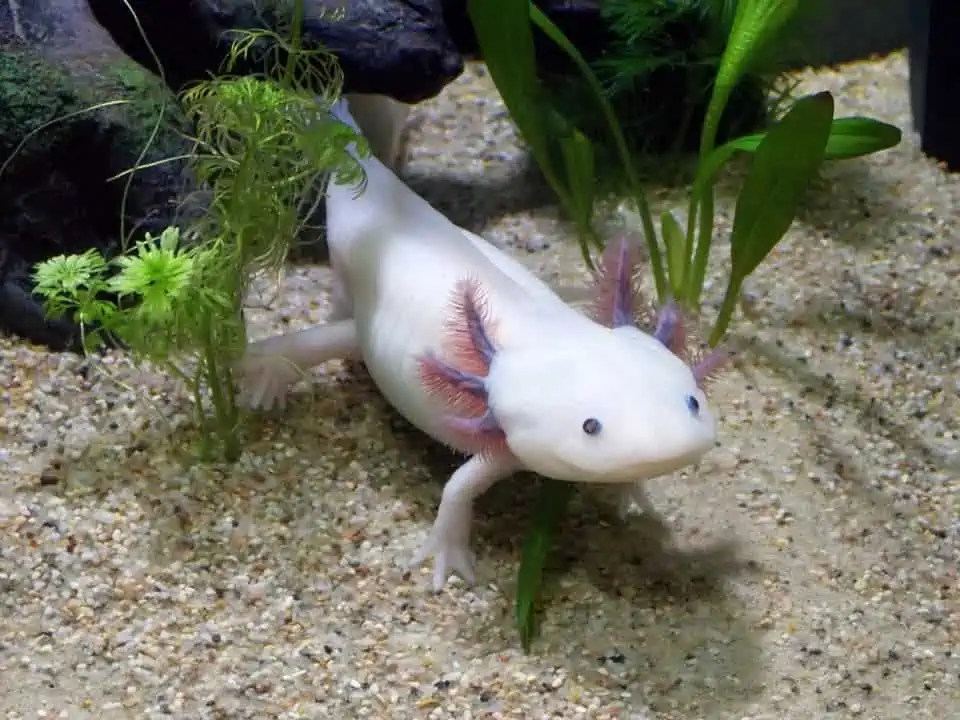
Most axolotls in the wild are black or brown, but pets are often albino. The albinos are very rare in the wild but liked by breeders and often interbred.
The albino axolotl lacks pigmentation due to a genetic condition, resulting in a white or pinkish hue, which has earned it the nickname ‘water dragon.’ What’s more, their eyes exhibit a captivating red or pink color due to the blood vessels behind their transparent irises.
Despite their appearance, albino axolotls require the same care as their traditionally colored counterparts, offering a unique opportunity to observe these incredible creatures in a new light.
Is it okay to keep axolotls as pets?
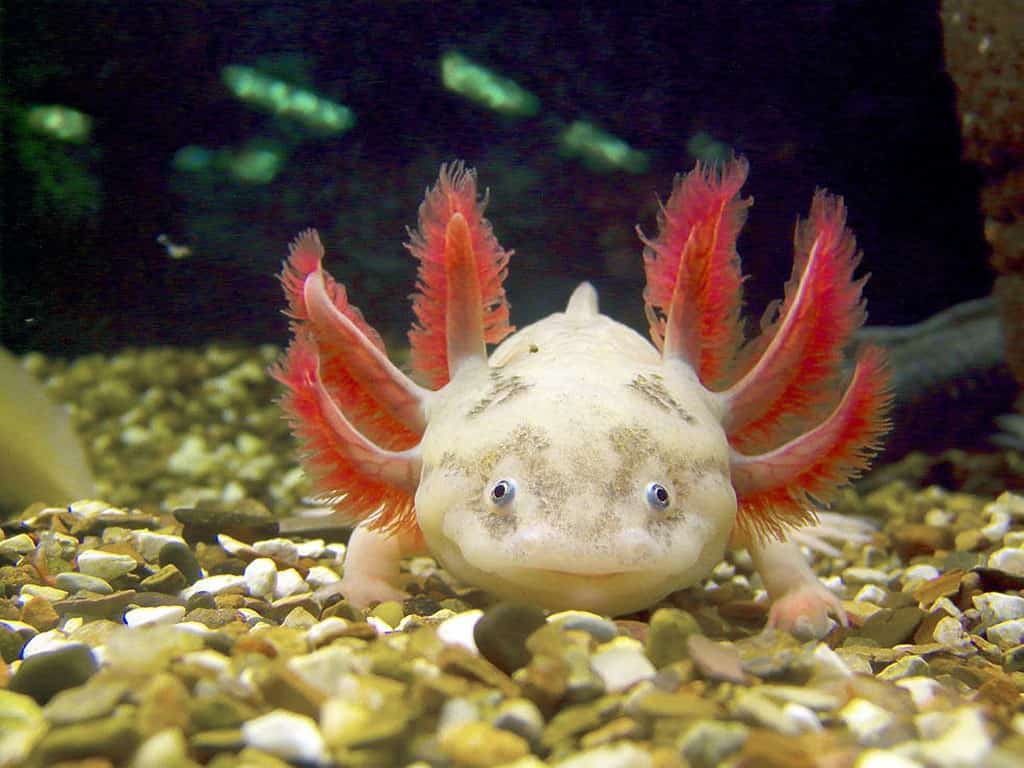
As fascinating as axolotls are, they’ve also become popular pets. These aquatic salamanders can provide a unique form of companionship, engaging owners with their active foraging behaviors and gentle interactions.
But don’t let their simplicity fool you; these animals still need proper care and understanding. In fact, they’re some of the most high-maintenance pets out there.
Given their sensitive nature, axolotls require a peaceful environment. Loud noises or sudden movements can stress them, leading to potential health problems. Moreover, despite their regenerative abilities, axolotls can still fall ill. Therefore, monitoring their health and providing the necessary veterinary care when required is crucial.
They also require very specific aquariums, a low and constant water temperature, frequent water cycling, and pristine water quality.
Axolotls are definitely not for everyone. Considering they can live for up to 15 years, keeping one as a pet is a huge commitment. But if you are a responsible person who really likes aquatic pets, axolotls can be a great option.
“Don’t do it. Don’t do it unless you can commit to looking after an axolotl for at least 10 to 15 years, and you can give it an enriched life for its whole life. Axolotls are going to be with you for a long time. You need to be prepared for that,” says New Zealand’s chief veterinary officer Helen Beattie.
“You also need to understand that they’re not low maintenance. You need a large tank, at least 20 litres, that you clean regularly because they produce an enormous amount of waste. You also need a lid for the tank because they can jump out.”
“And with exotic animals it’s particularly challenging to meet their welfare needs in captivity. Routinely we see nontraditional species, for example, axolotls, suffering from malnutrition, inadequate husbandry, poor environment enrichment and lack of appropriate veterinary care.”
Top 10 Tips for Keeping an Axolotl as a Pet
- Create a Comfortable Environment: Axolotls need a large aquarium to swim and explore. A 20-gallon tank is recommended for a single axolotl. Remember, these creatures need plenty of space to stay healthy and happy.
- Maintain the Right Temperature: Axolotls prefer cooler temperatures. Keep the water in the tank between 60-64°F (15-18°C). High temperatures can stress your axolotl and lead to health problems.
- Keep the Water Clean: Install a good quality filter to maintain water cleanliness. Axolotls are sensitive to water quality, and poor conditions can lead to health issues.
- Don’t Use Gravel: Gravel can be dangerous for axolotls because they might accidentally ingest it while eating, which can lead to blockages. Instead, use a fine sand substrate or keep the tank bottom bare.
- Provide Hiding Spots: Axolotls like to hide, especially during the day. Provide structures like caves, plants, or decorations to make them feel secure.
- Feed a Balanced Diet: A diet of brine shrimp, bloodworms, and occasional lean meat can provide the necessary nutrients. Remember, overfeeding can lead to obesity, so keep meals moderate and remove uneaten food promptly.
- Handle with Care: Axolotls have delicate bodies, so it’s best not to handle them unless necessary. If you must, be sure to wet your hands first to prevent damaging their slimy protective coating.
- Monitor Their Health: Even with their incredible regenerative abilities, axolotls can still fall ill. Keep an eye on their behavior and appearance for any signs of illness.
- Keep Them in Peace: Loud noises and sudden movements can stress axolotls. Place their tank in a calm, quiet spot in your home.
- Learn and Respect Their Needs: Every axolotl is unique, so take the time to learn about their specific needs and behaviors. With proper care and respect, your axolotl can live a long, healthy life.
Axolotls are vulnerable: they hang by a genetic thread
One big problem is that all of the axolotls in captivity have been interbred for a long time and are very inbred. Most have been bred from 34 salamanders taken in 1863. This makes them very vulnerable to illness and one disease could wipe them all out.
Therefore, it is critical to protect the wild population to maintain genetic diversity and prevent the species from becoming inbred. Unfortunately, the situation is critical. The two main problems are non-native fish, that are eating them, and water pollution. Immediate action is needed to protect them from extinction.
Researchers are trying to work with fishermen to take out the non-native fish and tackle the water pollution problem, but they are having trouble finding enough funding to carry out their research. It is a challenging mission, but hopefully, one that will be successful in the end.
Whether you encounter them in a textbook, a lab, or a home aquarium, axolotls are a testament to the wonders of evolution and the mysteries that nature still holds. In every respect, they are a marvel worth preserving, studying, and above all, admiring.
Just take note if you want to keep one as a bet, you better do your homework!
